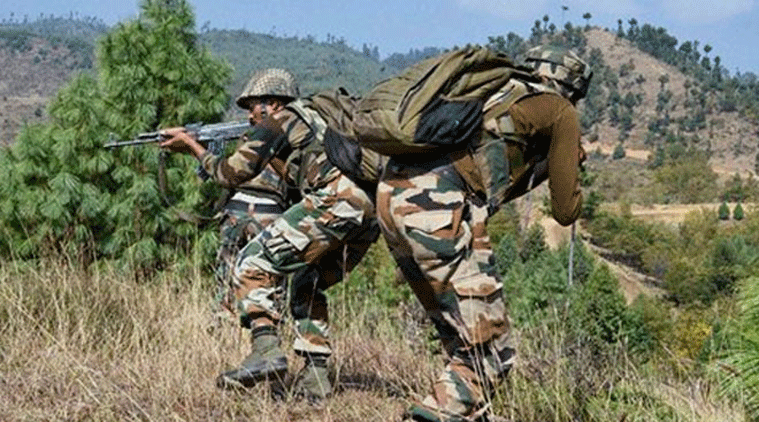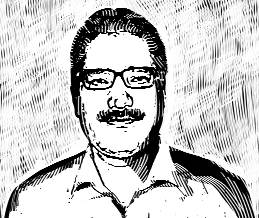A glimmer of hope
Why the Ramzan ceasefire is a necessity for the people of Kashmir, and an opportunity for its political actors
Updated: June 16, 2018 8:12:11 am

The Centre’s ceasefire announcement needs to be seen in a context. (File)
Shujaat Bukhari, a senior journalist, was killed in Srinagar on June 14. This article is excerpted from a piece published on May 18 in Rising Kashmir, of which he was Editor-in-Chief
Two days before the holy month of Ramzan, a surprise announcement came from the Union Home Minister Rajnath Singh when he announced through his Twitter handle that government forces in Jammu and Kashmir have been asked to halt operations against militants. This, according to him, was to ensure that the month of fasting passes peacefully. In a way, it was a unilateral but conditional ceasefire about which the buzz was already on. The ceasefire announcement also came just four days before Prime Minister Narendra Modi’s visit to Jammu and Kashmir.
Given the policy of using hard power in Kashmir for the last four years, this decision was unexpected even as an all-party meeting, comprising all mainstream parties had, on April 9, unanimously resolved to call for the ceasefire. Chief Minister Mehbooba Mufti was leading from the front to seek this “concession” so that both the Ramzan and the upcoming Amarnath Yatra pass off peacefully. However, given the way her ruling partner, the BJP, opposed the proposal and Defence Minister Nirmala Sitharaman rejected it, little hope was left. The PDP and BJP have been at loggerheads over contentious issues such as the Armed Forces Special Powers Act (AFSPA), talks with the Hurriyat and Pakistan, notwithstanding the agreement they had reached in the Agenda of Alliance.
Despite the scepticism and even outright rejection from various quarters, the announcement came as a glimmer of hope for the common people. Deaths of militants who had joined the ranks in past few years and civilians who become collateral damage, have become unbearable. Some sections believe that the way the common Kashmiri has been resisting the Indian state has taken the conflict to a different level and in some cases, people don’t even shy away from celebrating the deaths for the “cause”. But that is perhaps not the majority view and despite Delhi’s poor track record in handling Jammu and Kashmir, there are takers for this latest move.
Not only has the diatribe continued from the BJP as a party, the ministers in the government have been continuously dismissing the upsurge of the sentiment on the ground. This not only led to the killing of a few hundred militants after the killing of Hizbul commander Burhan Wani in July 2016, it also opened the gate for more and more Kashmiri youth joining the militant ranks.
With South Kashmir becoming the hotbed of militants, followed by the operations that took a heavy toll on civilian lives, the allure of violence backed by societal sanction has brought a record number of boys to the militants’ fold since January 1. While the number has touched 70, what is disturbing is that the figure doubled after the April 1 bloodbath, in which 13 militants and four civilians were killed. As per officials, 35 youth joined the ranks of the militants after April 1.

The Centre’s ceasefire announcement needs to be seen in a context. Avoiding civilian casualties at encounter sites is a test the security forces have been failing. It had become too difficult for New Delhi to face up to this at international fora frequently. With the people’s unrelenting support to militants, a ceasefire was perhaps the only way to tackle the situation. Chief Minister Mehbooba Mufti has been finding it difficult to come out of this quagmire and the fast-shrinking space for the political mainstream in Kashmir is a worry that the Centre would not take lightly. Mufti’s persistence, despite strong voices of resentment from the BJP and the establishment, has paid off. Whether or not Delhi had its own compulsions to move in this direction and depart from its policy, the fact is such a move was much needed to give a breather in a situation where killings had become the new normal. In this case, the cycle of violence starts with the operations of the forces that trigger anger and subsequently the killings. The ceasefire could be an incremental step that can pave the way for making it not only a permanent feature but also bringing other issues including release of prisoners, misuse of the Public Safety Act, etc, within its ambit.
It is important to see this move in the broader context. In the past few months, there have been positive signals coming from Islamabad and that too from the army. On April 15, Pakistan army chief, General Qamar Bajwa, spoke of dialogue with India to resolve all issues. In its report released on May 3, London-based think tank, the Royal United Services Institute (RUSI), stated that bilateral ties between the two arch-rivals are warming. It cited the invitation to India’s military attaché at its Islamabad High Commission to the military day parade. It also pointed out that Pakistan would be taking part in joint military exercises with India and other regional countries, including China, under the banner of the Shanghai Cooperation Organisation (SCO) in August.
Whether these linkages can be stitched together, the ground for creating a space for peace and reconciliation is not missing on both sides. While Pakistan is an important stakeholder in the process, New Delhi also will have to move beyond this symbolic gesture and start talking about the political issue. Then only can this move put the failed ceasefires of the past behind.
For all the latest Opinion News, download Indian Express App






































No hay comentarios:
Publicar un comentario